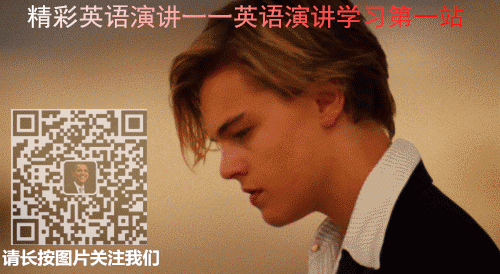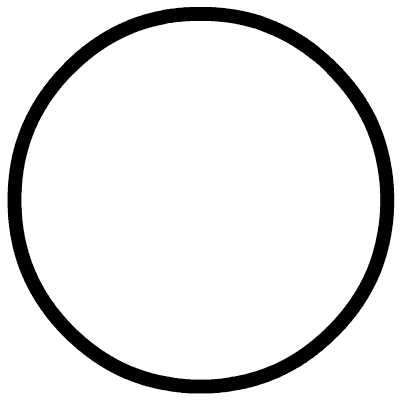《时代》杂志第一位“年度风云儿童”公布!15岁印度裔美国少女凭借一个发明夺此殊荣,还和性感女神朱莉视频对话!(附视频&摘要稿)


英语演讲视频,第一时间观看



美国《时代》杂志每年均会选出年度风云人物,16岁的瑞典气候少女贝里上年当选成为2019年的风云人物,成为史上最年轻的年度人物。
而今年《时代》杂志首次选出「年度风云儿童」(Kid of the Year),由美国科罗拉多州15岁印度裔发明家拉奥(Gitanjali Rao)中选。

据报,来自丹佛市的拉奥在5000名候选人中脱颖而出,她曾研究AI和纳米碳管等的科学工具,又将有关研究应用在日常生活上,例如网络欺凌和水污染。
杂志又认为,拉奥向其他孩子展示了如何利用自身的好奇心和渴望,去创造一个新世界。
荷里活女星安祖莲娜祖利亦有向她表达恭贺。拉奥表示我看起来并不像典型的科学家,我在电视上看到的科学家都比我年长,而且他们通常是白人。
又称,目标已经非单是依靠创造的设备来解决问题,更希望激励别人,如果我能做到,你也能做到,任何人都能做到。

↓↓↓ 上下滑动,查看对话稿 ↓↓↓
“Observe, brainstorm, research, build and communicate.” That is what the brilliant young scientist and inventor Gitanjali Rao told actor and activist Angelina Jolie about her process, over Zoom, from her home in Colorado, during a break in her virtual schooling. Just 15 years old, Rao has been selected from a field of more than 5,000 nominees as TIME’s first ever Kid of the Year. She spoke about her astonishing work using technology to tackle issues ranging from contaminated drinking water to opioid addiction and cyberbullying, and about her mission to create a global community of young innovators to solve problems the world over. Even over video chat, her brilliant mind and generous spirit shone through, along with her inspiring message to other young people: don’t try to fix every problem, just focus on one that excites you. “If I can do it,” she said, “anybody can do it.”
Jolie, a TIME contributing editor, is an Academy Award–winning actor and special envoy of the U.N. High Commissioner for Refugees
ANGELINA JOLIE: When did you know that science was a passion of yours?
GITANJALI RAO: I feel like there wasn’t really one specific aha moment. I was always someone who wanted to put a smile on someone’s face. That was my everyday goal, just to make someone happy. And it soon turned into, How can we bring positivity and community to the place we live? And then when I was in second or third grade, I started thinking about how can we use science and technology to create social change. I was like 10 when I told my parents that I wanted to research carbon nanotube sensor technology at the Denver Water quality research lab, and my mom was like, “A what?” [Editor’s note: they are cylindrical molecules made of carbon atoms that are very sensitive to chemical changes, and thus are good for detecting chemicals in water, among other uses.] It was just that changing factor of, you know this work is going to be in our generation’s hands pretty soon. So if no one else is gonna do it, I’m gonna do it.
AJ: I love that. So much of what my generation should be doing is just making sure we do as little damage as possible to ensure that the next generation can take the lead.
I know one of your latest innovations helps prevent cyberbullying. Could you tell me about that?
GR: It’s a service called Kindly—there’s an app and a Chrome extension—which is able to detect cyberbullying at an early stage, based on artificial-intelligence technology. I started to hard-code in some words that could be considered bullying, and then my engine took those words and identified words that are similar. You type in a word or phrase, and it’s able to pick it up if it’s bullying, and it gives you the option to edit it or send it the way it is. The goal is not to punish. As a teenager, I know teenagers tend to lash out sometimes. Instead, it gives you the chance to rethink what you’re saying so that you know what to do next time around.
AJ: So you just put it on your kids’ phones?
GR: Yeah. I put out a survey to parents, teachers and students, and I honestly expected that students don’t want to be micromanaged.
AJ: Right. My kids would be like, “Don’t touch my phone, I’ll do it myself.”
GR: No, exactly, that’s what I would be like. But a lot of the teenagers were telling me that, you know, it doesn’t seem like I’m being micromanaged; it seems like I’m being given an opportunity to learn from my mistakes. So that’s what I was superexcited about, that they understood what the goal of it was.
AJ: The way you’re talking about technology as a tool to remind people and help them to grow seems like a very new and different thing. It’s so exciting to have such a forward-thinking young, and female, inventor.
Does that affect you in any way? It’s surprising because I think of women as being brilliant, but there are so few women in the science and tech fields.
GR: I don’t look like your typical scientist. Everything I see on TV is that it’s an older, usually white man as a scientist. It’s weird to me that it was almost like people had assigned roles, regarding like their gender, their age, the color of their skin. My goal has really shifted not only from creating my own devices to solve the world’s problems, but inspiring others to do the same as well. Because, from personal experience, it’s not easy when you don’t see anyone else like you. So I really want to put out that message: If I can do it, you can do it, and anyone can do it.
AJ: I know you have these “innovation sessions.” Tell me about those.
GR: I just looked at what worked for me and decided to share it with everyone else. So I made this process that I use for everything now: it’s observe, brainstorm, research, build, communicate. It started with a simple presentation and lesson plans, and then I started adding labs and contests that students could do. Now I’ve partnered with rural schools, girls in STEM organizations, museums all across the world, and bigger organizations like Shanghai International Youth Science and Technology group and the Royal Academy of Engineering in London to run innovation workshops.
The students that I work with, they just don’t know where to start. I think that if you give them that spark that they can then build off of, then that changes everything. That means one more person in this world wants to come up with ideas to solve problems.
At the end of every workshop, everyone has something that they can start working on. If you can do this in 45 minutes to an hour, imagine what you can do if you spend months and months working on it. I’m so excited when I get an email like, “Hey, I attended your workshop four months ago and here’s my finished product, I really love it, it’s a shoe that calls 911.”
AJ: That is insanely impressive. For so many young people, it takes a lot to find the confidence to be able to put an idea forward. You have a brilliant mind, clearly, but you are very, very generous with that mind, and that’s just really wonderful. What are you working on now?
GR: I’m currently working on an easy way to help detect bio-contaminants in water—things like parasites. I’m hoping for this to be something that’s inexpensive and accurate so that people in third-world countries can identify what’s in their water.
And I recently hit my goal of 30,000 students who I have mentored, which is superexciting. It’s like creating a community of innovators. I really hope the work that all of these kids are doing identifies innovation as a necessity and not something that’s a choice anymore. I hope I can be a small part of that.
AJ: I think you are. Your generation is unique. You don’t just accept what’s being put forward, but really question it, and that’s so important. I know there are many, many issues we’re facing today. With your work on water contamination, is the environment something that’s very much on your radar?
GR: Yeah. Our generation is facing so many problems that we’ve never seen before. But then at the same time we’re facing old problems that still exist. Like, we’re sitting here in the middle of a new global pandemic, and we’re also like still facing human-rights issues. There are problems that we did not create but that we now have to solve, like climate change and cyberbullying with the introduction of technology.
I think more than anything right now, we just need to find that one thing we’re passionate about and solve it. Even if it’s something as small as, I want to find an easy way to pick up litter. Everything makes a difference. Don’t feel pressured to come up with something big.
Most of my work with the bio-contaminants is based on a gene-based therapy solution which I’m still trying to figure out. I’m also working on a product that helps to diagnose prescription-opioid addiction at an early stage based on protein production of the mu opioid receptor gene. I’ve been really, really interested in genetics. That’s what I like, so that’s what I’m deciding to work on.
AJ: You know, one of the things you pointed out which is so important is that there is so much, you can get overwhelmed. When I started working in refugee camps, there are so many different issues to deal with within a displaced situation. You get overwhelmed, and you don’t really move. I love what you’re saying: find what you’re passionate about, and don’t try to solve everything. Every solution is a part of the bigger picture of what we have to do. I really hear that and appreciate you saying that.
Where do you get your news or do your research?
GR: My pop-culture news is actually MIT Tech Review. I read it constantly. I think that’s really where inspiration strikes: hearing about all these amazing people at schools like MIT and Harvard who are doing such amazing work with technology. And I try to connect it back to what I see out there and put it together in a way that no one’s seen before.
AJ: When you’re not doing all of these amazing things—because I feel like I’m speaking to a 60-year-old scientist in Geneva—what do you do that’s just a 15-year-old thing?
GR: Actually I spend more time doing 15-year-old things during quarantine. I bake an ungodly amount. It’s not good, but it’s baking. And, like, it’s science too.
AJ: So the science of the kitchen is not your specialty?
GR: I guess not, no. To be fair, most of the time we don’t have eggs at home, or like flour, so I have to like go online and search eggless, flourless, sugarless cookies, and then I try to make that. I made bread recently and it was good, so I’m proud of myself.
AJ: Well, I’m just so happy to get to know you a little bit. I’m sure I’ll be using your inventions in years to come and just being in awe of you as I watch you do more and more in your life, and I can say, “I met her once.”
就直接装载在孩子的手机上吗?
GR:是的,我已经在家长、老师和学生中做过了调研并得到了认可。我并不希望孩子们被掌控。
所以,厨房里的科学不是你的强项?
GR:
我觉得不是。现在的情况,我们家里大部分时间没有鸡蛋或者面粉。所以,我要上网搜索无鸡蛋、无面粉、无糖的饼干的配方。最近,我做了面包,还不错,我挺为我自己骄傲。
15-year-old Gitanjali Rao’s recent invention is an app and web tool called ‘Kindly’, which uses artificial intelligence to detect the early signs of cyberbullying.
15岁的吉坦哈利·拉欧最近的发明是一款名为“友善”的应用软件和网络工具,它运用人工智能探测网络霸凌的早期迹象。
Gitanjali Rao, a 15-year-old Indian-American scientist and inventor, was named Time Magazine’s first-ever Kid of the Year. The US-based publication announced the award Thursday, citing her ability to use technology to “tackle issues ranging from contaminated drinking water to opioid addiction and cyberbullying”.
这位15岁的印裔美国科学家和发明家,被推选为《时代周刊》有史以来的首位年度儿童。鉴于她运用科技来“解决问题”的能力——“从饮用水污染到阿片类药物成瘾和网络暴力”,美国主版《时代周刊》本周四宣布评选她为“年度儿童”。
Rao, who was featured on the cover of the latest edition of the magazine, was selected from a pool of over 5,000 nominees. In an interview with actor and activist Angelina Jolie, the Colorado teenager spoke about her innovations and shared a message for other young people: “If I can do it, anybody can do it.”
拉欧从五千多人的候选名单中脱颖而出,成为《时代周刊》最新一期的封面人物。演员兼社会活动家安吉丽娜·朱莉对她采访时,这位科罗拉多少女谈到了自己的发明并向年轻人分享自己的心得:“如果我可以,任何人都可以。”

别看拉奥仅仅只有15岁,已经是一位卓有成就的科学家和发明家了。她在12岁时就研发出一种检测水质的装置,可以通过蓝牙连接到任何一部智能手机上,只需放到水中等待10秒,就可以在手机上接收到检测数据,方便快捷。
而她最新的发明是一款叫做Kindly的应用程序,能够基于人工智能技术筛选出网络暴力行为。对于保护青少年不受网络暴力侵害,有着显著效果。

朱莉是备受影迷喜爱的好莱坞巨星,各项大奖拿到手软。除了演员工作,她还出任导演,编剧,制片人,联合国难民署高级专员特使。
即便是这样,朱莉还是被拉奥的成就惊呆了,她非常赞赏Kindly这个创意,并表示说会强烈建议自己的孩子们下载这个应用程序。“不过我的孩子们会告诉我,‘别碰我的手机,我自己会下载’”朱莉大笑道,看来明星母子也和普通人有着同样的烦恼。
世界属于那些改造世界的人。尽管未来具有很大的不确定性,但是每个时代都会产生领军人物,这些人物在不同的领域产生了不同的影响。这些都是做困难事的榜样。
在过去的92年中,时代周刊每年都会评选一个年度人物。2019年,当时16岁的Greta Thunberg成为有史以来最年轻的年度人物,也是首位获得该称号的25岁以下的人。她阻止气候变化的运动,以及近年来其他改变世界的青年运动,都清楚地表明,年轻人在今天具有巨大的影响力,他们正在利用这种影响力塑造一个符合其愿景的世界。

今年,时代周刊和尼克儿童频道合作,评选了有史以来的第一个年度孩子 (Kid of the Year),这是美国最年轻一代领导人的晴雨表。为了选择2020年最有影响力的孩子,他们在社交媒体和全国学区进行了广泛的搜寻,寻找那些可以改变世界的行动,或大或小。“小步骤可以带来重大改变。”,编辑安德里亚·德尔班科说:“这些都是普通的孩子,他们以一种有趣易行但非常有影响力的方式在社区中做出实质性的改变。”
包括来自特奥会和劳伦斯美国公益基金会的代表组成了一个咨询委员会,根据孩子们产生的积极影响在5,000多名美国提名人中挑选。一个由孩子组成的委员会包括尼克星Young Dylan和Chinguun Sergelen,迪斯尼明星Sky Katz,Little Chef Ivy和Time For Kids记者Tiana Sirmans和Raunak Singh,与喜剧演员Trevor Noah一起共同确定了决赛入围者,并选择了最终的年度孩子。
这五个决赛入围者包括14岁的Tyler Gordon,来自加利福尼亚州圣何塞;14岁的Jordan Reeves,来自密苏里州哥伦比亚市;10岁的Bellen Woodard,来自弗吉尼亚州里斯堡;16岁的Ian McKenna,来自德克萨斯州奥斯丁,以及”年度孩子“奖得主-15岁的Gitanjali Rao,来自科罗拉多独树。
这五个孩子都将被指定为时代周刊的孩子记者,有机会为时代周刊继续做出贡献,并将获得尼克儿童频道的所有者ViacomCBS提供的现金奖励。
这五位孩子,不仅有聪明的头脑,更有一颗善心。值得注意的是,在他们的背后都有一个智慧的父母,肯定他们的价值和不同,支持他们“另类”的主意,Gitanjali Rao的父母有科学的背景。Tyler Gordon和Jordan Reeves的父母没有因为他们身体的缺陷而忽视他们,而鼓励他们把缺陷变成机会。Bellen Woodard和Ian McKenna的父母支持他们的计划,来促进社会的公正。也许我们的孩子不会成为 “年度孩子”,但是我们可以学习成为有智慧的父母!接下来我们进一步了解一下这位获得2020年度《时代》杂志风云儿童的印度裔美国少女吧。

Gitanjali Rao:用科技改变世界
杰出的领导才能使15岁的科学家和发明家Gitanjali Rao脱颖而出,成为最终的“年度孩子”。Rao不仅研究诸如人工智能和碳纳米管传感器技术之类的科学工具,还将其应用于她在日常生活中遇到的问题,例如网络欺凌和水污染。

Gitanjali Rao说她从小就喜欢让别人微笑,后来变成了“我们如何将积极性和社区带入我们的生活?”二、三年级时,她开始思考“我们如何利用科学技术来创造社会变革?” Gitanjali Rao在七年级的时候,听到密西根的水污染事件,发明了一个叫Tethys的设备,可以快速检测水里含铅的比例,这项发明让她获得了2017年3M举办的年轻科学家挑战大奖。
后来她创建了一项名为Kindly的服务,其中包含一个应用程序和一个Chrome扩展程序。它能够基于人工智能技术在早期阶段检测网络欺凌。了解到很多病人因为阿片类药物上瘾,而医生缺乏可靠的方式判断病人是否上瘾,她发明了一种易于使用,便携式且高效的设备,称为Epione,医生可以用来在早期判断患者是否成瘾。



不仅自己发明,Rao还给全世界各地的孩子组织”创新作坊“,教他们如何用“观察,头脑风暴,研究,构建和交流” 的过程来创新。她跟农村的学校、女孩科技组织、国际青年科技协会、伦敦皇家工程学院合作来辅导孩子。目前她在研究一种容易的方法可以来检测水的污染,她希望这种方法可以便宜到欠发达国家可以使用。她已经实现了自己带领30,000个孩子的目标,她的使命是希望能够建立一个国际性的孩子创新社区。

Gitanjali Rao喜欢的娱乐节目是读”麻省理工科技评论“,她从麻省理工和哈佛那些聪明的学者身上得到激励,试图像他们一样把科技应用到生活之中。即使通过视频聊天,Gitanjali的聪明才智和慷慨的精神也伴随着她对其他年轻人的鼓舞人心的信息闪耀了出来:不要试图解决所有问题,而要专注于使你兴奋的问题。Rao说:“如果我能做到,任何人都可以做到。”
这位年轻的科学家还擅长弹钢琴,印度古典舞蹈,唱歌,游泳和击剑。九岁的时候她开始学习古典音乐。她告诉时代周刊,“ 疫情期间,她花了很多时间学习烘烤,“有时候我们没有鸡蛋或面粉,所以我上网搜索那些无蛋,无面粉,无糖的饼干配方,并且尝试烘烤。我最近做了面包,很好吃,所以我为自己感到骄傲。”

防止未来失联
请长按识别二维码关注备用号

想第一时间接收英语演讲文章&视频?把精彩英语演讲设置为星标就对了!操作办法就是:进入公众号——点击右上角的●●●——找到“设为星标”点击即可。



最新评论
推荐文章
作者最新文章
你可能感兴趣的文章
Copyright Disclaimer: The copyright of contents (including texts, images, videos and audios) posted above belong to the User who shared or the third-party website which the User shared from. If you found your copyright have been infringed, please send a DMCA takedown notice to [email protected]. For more detail of the source, please click on the button "Read Original Post" below. For other communications, please send to [email protected].
版权声明:以上内容为用户推荐收藏至CareerEngine平台,其内容(含文字、图片、视频、音频等)及知识版权均属用户或用户转发自的第三方网站,如涉嫌侵权,请通知[email protected]进行信息删除。如需查看信息来源,请点击“查看原文”。如需洽谈其它事宜,请联系[email protected]。
版权声明:以上内容为用户推荐收藏至CareerEngine平台,其内容(含文字、图片、视频、音频等)及知识版权均属用户或用户转发自的第三方网站,如涉嫌侵权,请通知[email protected]进行信息删除。如需查看信息来源,请点击“查看原文”。如需洽谈其它事宜,请联系[email protected]。
